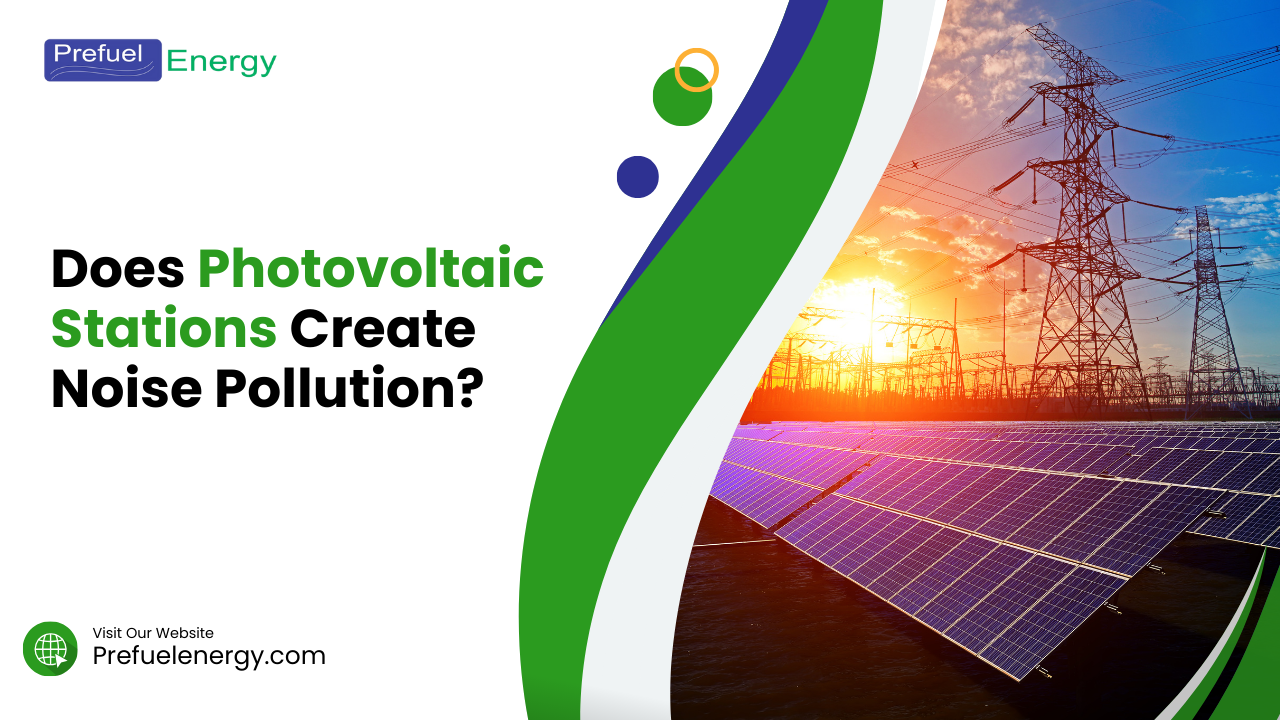Photovoltaic stations, commonly referred to as solar farms, are increasingly recognized for their role in renewable energy production. However, a common concern among communities near these installations is the potential for noise pollution.
This article explores the sources of noise associated with PV stations, the impact on surrounding areas, and effective strategies for noise reduction.
Table of Contents
Understanding Noise Pollution from PV Stations
A photovoltaic power station, sometimes referred to as a solar park, solar farm, or solar power plant, is a large-scale grid-connected photovoltaic power system (PV system) designed to supply commercial power. They vary from most building-mounted and other decentralized solar power systems in that they provide power at the utility level rather than to a specific user or users.
Also read: How to Identify Different Types of Solar Cells
The building and operation of PV stations is critical to reducing dependency on fossil fuels, improving energy security, and mitigating climate change. However, as the importance of sustainable energy develops, PV stations, which are an important component of clean energy, encounter some misconceptions and fallacies concerning noise pollution:
Sources of Noise
While PV stations are generally quieter than wind farms, they are not completely silent. The main sources of noise in these facilities include:
- Inverters: These devices convert the direct current (DC) produced by solar panels into alternating current (AC) for the electrical grid. The rapid switching of electrical flow in inverters generates low-frequency tonal sounds, primarily around 120 Hz.
- Transformers: Used to step up voltage for transmission, transformers contribute noise from electromagnetic forces and mechanical actions such as coil vibrations and cooling fans. The noise generated can also peak around 120 Hz and its harmonics.

Common Misconceptions
There are several misconceptions regarding noise pollution from PV stations:
- Continuous High-Frequency Noise: Many believe that PV stations emit continuous high-frequency noise that disrupts nearby residents. In reality, the noise is typically low-frequency and at levels lower than urban traffic noise, posing negligible health risks.
- Nighttime Noise: Some assume that PV stations operate at night, generating noise that affects sleep. However, these facilities primarily function during daylight hours and do not produce noise at night when inverters and cooling systems are inactive.
- Health Impacts: Research indicates that noise levels from PV stations are lower than those from urban environments, posing negligible health risks to nearby residents, provided that local noise regulations are adhered to1.
Effective Noise Mitigation Strategies
To address concerns about noise pollution, several effective strategies can be implemented:
- Acoustic Enclosures: Enclosing inverters and transformers in sound-absorbing materials can significantly reduce noise emissions.
- Upgraded Equipment: Investing in modern, quieter equipment can lower noise levels. Newer technologies often incorporate improved cooling systems and quieter operational mechanisms.
- Strategic Equipment Placement: Locating noisy equipment away from residential areas and using soundproofing materials can help minimize noise impact.
- Routine Maintenance: Regular checks and maintenance ensure that equipment operates smoothly, reducing noise caused by mechanical wear and tear.
- Noise-Absorbing Materials: Incorporating materials designed to absorb sound in the construction of PV stations can dampen noise transmission.
- Vegetative Barriers: Planting trees and shrubs around PV stations can serve as natural sound barriers, absorbing and deflecting sound waves.
- Advanced Sound Monitoring: Implementing monitoring systems allows for real-time tracking of noise levels, enabling prompt responses to any issues.
Also read: What are the Main Components of Solar Panel?
Book Best Solar Panel on No Cost EMI
Compliance and Regulations
European Standards
In Europe, several standards govern noise emissions from PV stations:
- EN 61672-1:2013: This standard specifies performance requirements for sound level meters, ensuring accurate measurement of noise emissions from PV stations.
- EN 12354: Focused on building acoustics, this standard provides guidelines for sound insulation, aiding in the assessment and mitigation of noise within structures housing PV equipment.
EU Regulations
The European Union has established regulations to manage environmental noise, including:
- EU Environmental Noise Directive (END) 2002/49/EC: This directive mandates EU member states to evaluate and manage environmental noise, requiring the creation of noise maps and management plans. Typical allowable noise levels for industrial areas range from 60-70 dB(A) during the day and 50-60 dB(A) at night.
- EU Machinery Noise Directive (2000/14/EC): This directive regulates noise emissions from machinery, including equipment used in PV stations, setting permissible noise levels that generally range from 70-80 dB(A).
National Regulations
Different countries have specific regulations governing noise emissions from PV stations:
- Germany: Governed by the Federal Immission Control Act (BImSchG) and Technical Instructions on Noise (TA Lärm), which set noise limits of 50-55 dB(A) during the day and 35-40 dB(A) at night near residential areas.
- France: The Environmental Code regulates noise management, typically allowing 55 dB(A) during the day and 45 dB(A) at night in residential areas.
- United Kingdom: The Noise Act 1996 and Environmental Protection Act 1990 establish noise control measures, with daytime limits of 50-55 dB(A) and nighttime limits below 40-45 dB(A).

Local and Regional Regulations
Many regions have their own specific noise regulations, which may impose stricter limits on noise emissions from PV stations. These can include zoning laws and local environmental protection rules, emphasizing the need for compliance at multiple levels.
Conclusion
While noise pollution from photovoltaic power stations is a valid concern, it is generally less severe compared to other industrial activities. By understanding the sources of noise and implementing effective mitigation strategies, PV stations can operate with minimal disturbance to surrounding communities.
Ongoing advancements in technology and adherence to regulatory standards will further enhance the integration of solar energy facilities into their environments, supporting a sustainable and community-friendly approach to renewable energy.


